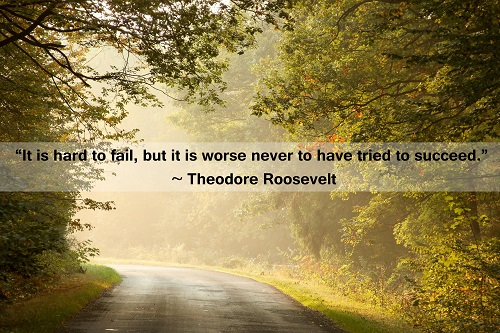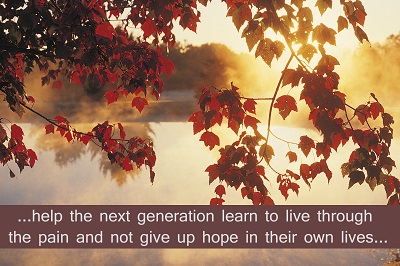Drug addiction is developed through a combination of biological and environmental factors. Each patient with an addiction represents a unique combination of factors that led to the condition. However, even if two individuals have identical environments, it does not guarantee that both individuals will have identical outcomes with addiction development.
A new study helps to explain why some individuals are able to use drugs, but do not develop an addiction. It also helps to explain why some patients are able to resist cravings after completing a substance abuse treatment program, while others experience relapse.
The study, conducted by researchers at the RIKEN Center for Molecular Imaging Science, located in Japan, and the Montreal Neurological Institute at McGill University in Canada, provides new information about brain circuitry that controls decision-making. The study finds that addiction may be linked to abnormal functions in the frontal cortex, the area that is responsible for decision-making.

The study’s findings are published in a recent issue of the journal Proceedings of the National Academy of Sciences of the USA. They show that the orbital and lateral regions of the brain, located in the frontal cortex, work together when cue related to drugs or craving is introduced. When those two areas of the brain do not work together well, addiction may be the result.
To examine this function of the brain, the researchers used a combination of tools, uniting functional magnetic resonance imaging (fMRI) with transcranial magnetic stimulation (TMS). The participants included 10 smokers, who were evaluated for cue-induced cravings and the resulting neural mechanisms. The researchers based this examination not only on cravings, but how the brain responds when drugs are not available, despite a craving.
The researchers found that among smokers the orbitofrontal cortex (OFC) was key in monitoring the level of craving and the dorsolateral prefrontal cortex (DPFC) evaluated drug cues and availability of the drug. The study demonstrated that the DPFC was able to suppress functions in the OFC if the cigarette was not available to the individual.
The study also tested the results of the DPFC being non-active using TMS and found that cravings and the related signals occurring in the OFC were not related to drug availability.
With these findings, the researchers conclude that the DPFC is central to functions of drug cues and evaluating drug availability and then works with the OFC where the information from the DPFC is used to determine whether drug-seeking behaviors will follow.
The authors of the study explain that in their smoker participants, after evaluating the drug cues and availability status in the DFPC, the cravings accumulated in the OFC. The authors found the results interesting, given that the neural circuits involved are central to decision-making and self-control, but normally guide an individual to making the most beneficial decision.
There are many research studies out there trying to understand drug addiction. Read Drug Addiction ‘Turned Off’ With Lasers to see another take on addiction recovery.
 The war on drugs has cost tax payers billions of dollars. In 2010 alone, the misuse of drugs cost America nearly 40,000 lives. Alcohol was blamed as a factor in about 85,000 deaths. Prescription drug abuse led to more than 22,000 deaths in 2010.
The war on drugs has cost tax payers billions of dollars. In 2010 alone, the misuse of drugs cost America nearly 40,000 lives. Alcohol was blamed as a factor in about 85,000 deaths. Prescription drug abuse led to more than 22,000 deaths in 2010.
New statistics coming out of the state of New Mexico are causing worry among health officials there. The state has some of the most alarming statistics when it comes to alcohol abuse. New Mexico holds the inauspicious record for the highest number of alcohol-related deaths in the nation since 1997. Drug abuse in the state also lands it squarely in the top three states year after year.
What’s leading to the massive rate of use and abuse in New Mexico? The New Mexico Youth Risk and Resiliency Survey of middle school and high school students found that many youths can easily obtain illegal substances with few, if any, significant obstacles in their way. Two-thirds of that survey’s recipients said that alcohol is readily accessible.
The survey found that 66 percent of teens judged access to marijuana as “uncomplicated.” In addition, 28 percent of high-schoolers said that “hard drugs” were readily accessible.
The state is getting “SWAT” teams in on the action by establishing relationships with the state’s youth. But these are not the SWAT teams dressed in black, carrying assault weapons. SWAT stands for Student Wellness Action Team. The members work with public and private schools to provide alcohol and drug awareness to youths across the state.
North and South America have half of the world’s heroin abusers, 45 percent of cocaine users and a quarter of marijuana users, according to a report from the Organization of American States (OAS). The current approach, the “war on drugs,” is severely lacking in support in the modern day, with numerous experts suggesting a more liberal strategy that re-phrases drug use as a health issue rather than a criminal one. This idea has been yet again proposed in a 200-page report from the OAS, urging American leaders to rethink their policies in the interest of users across the continents. Their argument takes several stands, looking at addiction as a health problem, considering the severe harm done by the drug trade, and the financial impact on both law enforcement and organized crime groups.
The Drug Use Report
 The purpose of the report was to prevent a starkly realistic portrayal of the impact of drugs across the Americas. José Insulza, secretary general of the OAS, said it is intended “to show the volume of money that changes hands and who benefits from it; to show how it erodes our social organization and how it undermines the health of our people, the quality of our governments and even our democracy.”
The purpose of the report was to prevent a starkly realistic portrayal of the impact of drugs across the Americas. José Insulza, secretary general of the OAS, said it is intended “to show the volume of money that changes hands and who benefits from it; to show how it erodes our social organization and how it undermines the health of our people, the quality of our governments and even our democracy.”
In addition to this, the report looks at the policies that have been implemented to date and the consequences if the problem isn’t dealt with more intelligently. The overall conclusion is that increased access to treatment, reduction of criminal punishments for use of drugs and strategies tailored to the conditions in the individual countries are the best approaches.
The Drug Trade
The damage done by the drug trade is one of the key points raised to support the viewpoint. As an example, Latin America produces essentially all of the cocaine consumed by Western users. The trade is run by criminal organizations, which have risen in power and come to undermine the rule of law in the region, breeding corruption, creating violence and destroying human rights. Human rights activists and journalists who expose the violence and politicians who refuse to be corrupted are at significant risk. The biggest damage, however, is to citizens caught in the crossfire between criminal gangs. Overall, the drug trade kills thousands each year across places like Central America, Mexico and Columbia.
Financial Benefits
The current system is financially beneficial only to the criminal gangs who supply and produce the illicit drugs. Nobody would buy alcohol from a gang, because it is available across the Americas and the companies who make it have standards to abide by. The black market in drugs, however, relies on those gangs entirely. According to the secretary general Insulza, this generates around $151 billion in retail for the gangs across the continents. This funds other illicit activity, and the industry also saps money from governments on both continents. In 2010 alone, the US spent $15 billion on the war on drugs, both internationally (significant chunks of the money goes to Columbia, for example) and domestically. The current system, in short, is a financial black hole.
Drug Abuse: It’s a Health Issue
The core message of the document is that addiction is a public health issue, not a criminal one. This has been stated numerous times, but the report emphatically states that decriminalization of drug use should be the basis for all public health strategies. It echoes the commonly stated criticism that addicts shouldn’t be punished for having what is widely recognized as an illness.
Drug addiction reprograms the addicts’ brains to crave drugs, so the choice to continue to use an illicit substance isn’t a moral failing; it’s more like a diabetes-sufferer having hyperglycemia after unknowingly consuming a sugary snack. Drug cravings are a symptom of an illness in exactly the same way hyperglycemia is a symptom of reduced insulin production. Perhaps the diabetes sufferer consumed too much sugary food throughout his life and consequently developed type 2 diabetes, but we don’t morally chastise him for it. Drug users have a mental health issue, which requires treatment as opposed to criminal punishment.
Sounds Good, But Is There Enough Support?
The reduction of penalties for drug abuse is obviously vital to this approach, but the support for the idea is rarely in line with the recommendations. The report isn’t in favor of legalization of all drugs—it advocates legalization of marijuana but suggests a decriminalized approach for other drugs. This would essentially render drug offences legally equivalent to traffic violations, which are rarely jail-worthy. While some of the 35 member states are receptive to the legalization of marijuana, they didn’t find any notable support for the decriminalization of any other currently illegal drug.
Despite this predictable setback, the report adds to a growing body of thought which should be nagging at politicians all over the world. Criminal approaches to tackling drug abuse don’t work; it’s essentially a punishment for suffering from a health condition. While it may be easier to avoid controversy if the idea is quietly brushed aside, you can only metaphorically cover your eyes and pretend you don’t see the evidence for so long.
05 Jun 2013
What Does A Sober Life Look Like?
“When we first came into A.A., a sober life seemed strange. We wondered what life could possibly be like without ever taking a drink. At first, a sober life seemed unnatural. But the longer we’re in A.A., the more natural this way of life seems. And now we know that the life we’re living in A.A., the sobriety, the fellowship, the faith in God, and the trying to help each other, is the most natural way we could possibly live.” (Twenty-Four Hours A Day, January 14)
When practicing addicts hear the word “sober” they immediately think of an eternity of boredom, drudgery, suffering, loneliness, anxiety, or just plain blah. As we stand at the edge of the diving board, trying to decide if we really want to dive into this program, we can’t help thinking of all of the fun nights we won’t be having, the awkward explanations for why we aren’t drinking, the new un-fun persona we imagine we’ll have to assume, and all the friends who will eventually stop calling. This is the reward for giving up booze?
For a while there is no way around it—we’re going to feel a little like fish out of water. Whether we like to admit it or not, we have built our lives around our behaviors and substances of choice. The prospect of a day or night without our fix made us uneasy, apprehensive, and anxious—provoking a feeling of dread. Unwilling to walk through the space of time without our drug of choice, we abandoned our plan to make a go of it sober and headed back to the welcoming arms of our old friend and nemesis.
But there came a day when there was no choice. We couldn’t keep up the drinking game any longer. If we were going to actually live and avoid certain alcoholic death, we were going to have to muster the courage to try sobriety.
But then something interesting happens. What we thought would be drudgery turns out to be delight. This has been true for many people and it can be true for you too.

In sobriety, life becomes something to live—an event for which to be present—not a doom from which we need to escape. Suddenly we find that we enjoy our days without alcohol and that we are seeing and experiencing the world in a new way. It is not boring—it is exhilarating.
New pleasures are discovered. When we drank we only thought of the euphoric rush of getting our fix and escaping even the smallest of irritations and anxieties. But in sobriety we learn how to meet life and how to embrace it—even in the challenges. We notice beauty, we learn new skills, we give our time to new activities, we feel ourselves growing stronger and developing as people. Life is full and rich and soon we don’t even miss alcohol.
Loneliness slips away in favor of real relationships. Though we often drank in the presence of others, our real date was with the booze. It was with alcohol that we felt we could be ourselves—whomever that was. We struggled to form real relationships of mutual trust and love with other people. We feared vulnerability. But in recovery we are learning how to give and take, how to be a friend, how to serve, and how to love. Our life is filling up with people who care about us and we are seeing the joys of authentic relationships—joys which alcohol could never provide.
Sobriety comes first. We never thought we’d say that sobriety and the program were our number one priorities, but we are learning that the new life we are becoming accustomed to, and even beginning to cherish, is utterly dependent upon it. We don’t handle these blessings carelessly. We know we are always just one sip away from where we were, and now we can’t bear the thought of going back.
“I realized that I had to separate my sobriety from everything else that was going on in my life. No matter what happened or didn’t happen, I couldn’t drink. In fact, none of these things that I was going through had anything to do with my sobriety; the tides of life flow endlessly for better or worse, both good and bad, and I cannot allow my sobriety to become dependent on these ups and downs of living. Sobriety must have a life of its own.” (Alcoholics Anonymous, He Only Lived To Drink, 451)
Want to get your Sober Life with the 12 Step Program? Think it’s just for Christians? Read: Recovery Myth-Buster: A.A. Is A Christian Organization
When people are afraid to get on an airplane, friends may comfort them by saying that many more people die in motor vehicle accidents than in airplane crashes. It seems incomprehensible to think that someone could say, “And even more people die by suicide.” But according to the Centers for Disease Control and Prevention (CDC), that is, in fact, the case.
In a recent issue of the CDCs Morbidity and Mortality Weekly Report, the number of people who died in motor vehicle accidents in 2010 was listed at 33,687, while the number of people who committed suicide was 38,364. Researchers noted that the majority of Americans taking their own lives were in the baby boomer generation. Economic problems, easier accessibility to opioids and stresses caused by care-giving are just some of the suspected causes of the suicide increase in this generation.
Suicide rates climbed most alarmingly in the baby boomer generation. In the 10-year study period, women in their 60s had a 60 percent increase in suicides (eight per 100,000) while men in their 50s had a 50 percent increase (27 per 100,000).

Researchers speculate on multiple reasons for the spike in the suicide rate. Baby boomers are arriving at reflective ages where some of them are not satisfied with where they are in their life. Life’s pressures and problems seem to prove too much for some.
Multiple problems and pressures may be pushing the American suicide rate higher. Financial loss or strain is just one possible reason for a feeling of hopelessness that may lead to suicide. Researchers believe that other problems may be caused by the overuse and easy accessibility of prescription painkillers. Opioid addiction is also rising in this country.
Being a caregiver for an aging parent while also taking care of a child who has returned home after college can also take a toll on boomer parents. While that age group is supporting family both older and younger than themselves, who is supporting them?
CDC representatives stress that the suicide rate may decline if more prevention programs and support is offered to those at risk for suicide. Sometimes it is not just one of the above mentioned problems or pressures—it is a combination. These complex reasons can be better sorted out with the guidance of professionals
Not only should at-risk individuals be helped, but so should those who have lost a loved one to suicide. Support groups to help those survivors can help the next generation learn to live through the pain and not give up hope in their own lives.
Read More About Opioid Abuse And Suicide Risks
03 Jun 2013
Is the Entertainment Industry to Blame for Drug and Alcohol Problems of Former Child Stars?
If you are like me, you have probably wondered why so many former child television, movie, and music stars have ended up addicted to drugs and alcohol, and just in general are living lives marked by excessive levels of melodrama and notoriety.
From Judy Garland in Hollywood’s Golden Age to contemporary figures such as Michael Jackson, Macaulay Culkin, Britney Spears, and Lindsay Lohan, there are innumerable case histories of individuals who found success on the stage, screen, and in the recording studio at tender ages only to be plagued by bouts with substance abuse and mental and emotional breakdown as they advanced into adulthood. Given how frequent and awful the stories of tragedy have been, it would be difficult not to draw the conclusion that there is something inherently traumatic about great success in the entertainment industry that causes talented young people who make it to the big time to eventually lose their way.
This is indeed an easy conclusion to draw, but that does not make it the correct one. There is no question that what young people who reach stardom at early ages experience is something far removed from normal or routine, and it may very well be that so much public scrutiny and attention so early in life does have an impact on impressionable minds that is not altogether positive. But for the sake of balance and perspective, it must be acknowledged that there have been scores of people who found success in the entertainment business who grow up to be happy, normal, successful and extremely well-adjusted people.
 So for example, while Judy Garland’s experiences with substance abuse have received much attention over the decades, we would be remiss if we did not note that the life of her contemporary, (and the most famous child star the world has ever seen), Shirley Temple, went in an entirely different direction. Temple eventually left the motion picture business and entered the world of international politics, where she helped blaze trails for women everywhere by securing appointments as a U.N. representative and the U.S. ambassador to Ghana and Czechoslovakia. And what is one to make of the career of Ron Howard, who began working steadily as an actor at the age of 6 and went on to become one of the most successful directors in the business and by all accounts a completely sober and level-headed guy? And what about all the formerly young stars who rose to prominence right alongside the notorious guys and gals we have all grown to know so well (Lindsay, Britney, Charlie Sheen, etc.) whose names have never once appeared in the tabloid press because they were busted for a DUI or forced to enter a rehab center?
So for example, while Judy Garland’s experiences with substance abuse have received much attention over the decades, we would be remiss if we did not note that the life of her contemporary, (and the most famous child star the world has ever seen), Shirley Temple, went in an entirely different direction. Temple eventually left the motion picture business and entered the world of international politics, where she helped blaze trails for women everywhere by securing appointments as a U.N. representative and the U.S. ambassador to Ghana and Czechoslovakia. And what is one to make of the career of Ron Howard, who began working steadily as an actor at the age of 6 and went on to become one of the most successful directors in the business and by all accounts a completely sober and level-headed guy? And what about all the formerly young stars who rose to prominence right alongside the notorious guys and gals we have all grown to know so well (Lindsay, Britney, Charlie Sheen, etc.) whose names have never once appeared in the tabloid press because they were busted for a DUI or forced to enter a rehab center?
There are countless examples of former child television, movie, or music stars who have gone on to lead admirable and entirely sane lives. And even among those who have run into trouble, there are many like Drew Barrymore who have been able to bounce back and apparently recover from their substance abuse issues. If we were to take a comprehensive survey, we would most likely discover that these stories of normalcy and triumph outnumber the scandalous tales and stunted life histories of Hollywood’s irredeemable bad boys and girls by a significant margin, but of course people aren’t really interested in hearing about all of the child stars who didn’t end up dead, addicted, or on the skids as adults.
This is not to suggest that there is no problem here. Insiders agree that the drug culture is alive and well in both Hollywood and the music industry and that levels of drug abuse and alcohol consumption are higher among celebrities than among the general public. But just because a certain type of temptation exists does not mean that all who are exposed to it will succumb even if they have been involved with those cultures from an early age, and the fact that so many don’t would tend to suggest that when grown child stars end up addicted and corrupted, there is a lot more going on than meets the eye.
When Parents Don’t Parent, Kids Don’t Grow Up
Rather than blaming the entertainment industry, we need to take a much closer look at the parents of these lost souls, who chose to expose their kids to the public eye during a potentially fragile stage of their lives. Many of the stars who have had the most trouble were actually pushed into the industry by moms and dads who were in it for the money or who wanted to bask in the glory of having famous sons or daughters. Judy Garland, Lindsay Lohan, Gary Coleman, Tatum O’Neal and Michael Jackson are just a few examples of troubled former child stars whose parents seem to have been more interested in fame and fortune than they were in the welfare of their children. In fact, it is quite rare to find former child stars who became addicted to drugs or alcohol later in life who would testify that they came from safe, secure and loving homes. On the other hand, young entertainers who grew up in stable homes with parents who always watched out for their interests and never pushed them to do anything they weren’t ready for are the ones who, for the most part, have seemed to do just fine after reaching maturity.
And that is the key word – maturity. So many of the child stars who have struggled as adults (Michael Jackson is the most obvious example here) never really grew up. Because their lives were so abnormal and distorted, they were never able to make the transition from adolescence to adulthood, and this “failure to launch,” to use a colloquial term, is what left them vulnerable to the dangerous temptations that the entertainment culture offers so readily. Immaturity and insecurity go hand-in-hand, which explains why Hollywood and the music industry attract so many people who lust after fame and fortune because they believe that getting people to pay attention to them and notice them is the one and only thing that can fill up the empty spaces in their souls. And what makes the situation so difficult for many former child stars is that they were taught to think and feel this way from an early age by parents who were projecting their own immaturity onto their helpless offspring.
Lights, Camera, Destruction!
 Behind the glitz, glamour, and money, Hollywood and the music industry share a dark side, and intensive involvement in this world may not be good for the minds, bodies, and spirits of vulnerable people who are in no position emotionally or psychologically to avoid all the potential pitfalls. The former child stars whose moms and dads pushed them toward the bright lights instead of allowing them to find their own passions undoubtedly carry many scars, and the bouts with substance abuse that so many have experienced is a direct reflection of this parental neglect and abandonment (lets call it what it is, kids forced to live out their parents’ dreams were most assuredly neglected and abandoned).
Behind the glitz, glamour, and money, Hollywood and the music industry share a dark side, and intensive involvement in this world may not be good for the minds, bodies, and spirits of vulnerable people who are in no position emotionally or psychologically to avoid all the potential pitfalls. The former child stars whose moms and dads pushed them toward the bright lights instead of allowing them to find their own passions undoubtedly carry many scars, and the bouts with substance abuse that so many have experienced is a direct reflection of this parental neglect and abandonment (lets call it what it is, kids forced to live out their parents’ dreams were most assuredly neglected and abandoned).
Celebrity itself is not to blame for the problem behavior of famous people, but the fact that so many seek fame with such hunger and desperation, as if it were the only thing that mattered, is a sign of deep-seated psychological and emotional immaturity. Child stars all too often are the victims of such misguided ambitions, rooted in the subconscious of their caregivers, and this is why it is hardly surprising that so many eventually fall into the greedy, grasping clutches of drugs and alcohol. Fame and fortune cannot replace parental love and support, and those who attain the former without the latter are almost inevitably headed for disaster—and the cameras will be right there to capture every moment of the action once it finally arrives.
More Hollywood News about Addiction: Colin Farrell: On Overcoming Addiction To Booze And Drugs
30 May 2013
Do Some Businesses “Reward” Drug Abuse?
An article in the Australian Business Review Weekly tells the story of “Ruth,” a high finance worker in Sydney who left her job because she wanted to stop snorting cocaine. According to her story—which was told to an Australian rehabilitation worker—substance abuse was a 24-hour habit in her business, with executives constantly sneaking off to the bathroom for a pick-me-up.
Substance abuse specialist Josette Freeman argues that it isn’t unusual in that sort of industry, claiming that meetings over wine and dinner with clients often descend into cocaine-taking, and even that the high stress and production-focused businesses essentially reward drug abuse by ignoring the issue if it benefits them. In the United States, it’s estimated that business owners lose $100 billion per year as a result of drug abuse—and the facts about its impacts don’t paint the sort of picture these businesses might imagine.
“Benefits” for Businesses
According to the US Department of Health and Human Services, in 2009 77 percent of illegal drug users had either part time or full time jobs. Given the high rates of substance abuse amongst lawyers, it seems reasonable to assume that other high-level professions will also be affected.

If you place yourself into the shoes of a business-owner or other employer (with a limited capacity for foresight), you can see that there are several superficial benefits to a drug-using workforce. Most drugs don’t even have these, but stimulants like cocaine generally increase alertness, help people stay awake, improve mental performance and reduce appetite. If you think coldly and callously, as if you’re only interested in making a profit, these effects are big plus-points for stimulant use in the workplace. You feel like you’ll get an active, focused and dedicated work-force, willing to pull long hours and with an almost constantly positive morale.
According to Josette Freeman—whose work for drug rehabilitation group SMART has put her in contact with many white-collar addicts—“there are a lot of workplaces where they don’t care too much about the workers if they are producing.” This is at least echoed in the legal profession in the US, where the problem is often ignored and allowed to continue.
Risk Factors for Workplace Drug Abuse
There are numerous different elements which can make workplace substance abuse more likely. A particularly important one is stress (which will be addressed in detail later) but many other factors such as long or irregular shifts, tiredness, repetitive duties, isolation, ease of access to substances, lack of supervision and low job satisfaction are also notable risk factors. Some of these (such as stress, tiredness and long hours) would typically be more likely to affect higher-level workers, but others (such as repetitive duties and low job satisfaction) are a particular concern for blue-collar workers. Regardless of the specific risk factors, most jobs evidently carry some inherent risk of substance abuse.
The Importance of Stress
Stress is a key factor when it comes to any type of substance abuse, and this is particularly relevant for high-level professions that carry a lot of responsibility. The mechanism by which stress contributes to addictive behavior has also been studied, but it’s important to understand that stress only creates a susceptibility to addiction. It all depends on how individuals deal with the stresses of the workplace. Healthy coping mechanisms that don’t rely on substances enable most workers to manage stress without relying on substances as a mood-elevator. However, not everybody has these coping mechanisms.
For individuals with less healthy stress management strategies, a high-stress job in the financial or legal industries can easily lead them down the road to substance abuse. As mentioned in the previous section, this is particularly likely if there is easy access to substances in the workplace. This means that if there is a “culture” of drug abuse in the office, anybody exposed to high levels of stress is especially likely to get sucked in. To truly combat the issue of workplace substance abuse, employees have to be taught healthy coping mechanisms and about the long-term effects of drug abuse in the workplace.
The Truth of the Matter
As you may expect, workplace drug abuse—which may have an initial appeal to some employers and employees—ultimately reduces productivity, increases the number of absences, and makes regular changes in employer even more likely. Even stimulants, which initially seem like productivity-drugs, can cause panic, aggression, suicidal thoughts, paranoia, and hallucinations in chronic (long-term) users. On top of this, stimulant users ordinarily binge and then “crash” in a period of little activity characterized by depression, anxiety, and cravings.
Workplaces need to remain vigilant against drug abuse, and it’s advisable to have a policy in place for dealing with workplace substance abuse. In addition to educational programs to increase awareness, it’s important for employers to provide access to treatment and support. Businesses should also be clear about testing protocols and commit to disciplinary action where required. It’s a problem that spans all workplaces, and all businesses must take steps to protect against it.
Read more about The Dangers of Recreational Drug Use Here
The problem of inhalant abuse has surfaced again in a recent story from California, where nitrous oxide abuse is linked to the death of a college student. According to the Substance Abuse and Mental Health Services Administration (SAMHSA), over 1 million Americans abuse inhalants each year, and they’re keen to point out that the problem is far from confined to adolescents. In the wake of the incident, law-makers in California are looking at implementing new legislation and raising awareness to reduce the numbers of needless deaths from inhalant abuse. However, the strategy appears to be geared toward young people, when national research has shown that the majority of inhalant admissions are actually from adults.
The Recent Death
Nineteen-year-old Claremont McKenna College student Ali Mirza was found with nitrous oxide canisters, or “whippets,” in his dorm room when he died. He was rushed to Pomona Valley Hospital Medical Centre, after paramedics failed to revive him at the scene of the incident last month. He was pronounced dead at 2am on May 17th, and his funeral is scheduled for the June 15th. His family and friends will mourn his untimely passing, but the increased efforts of police officers and law officials to combat inhalant abuse may prove to have positive consequences for LA’s youth.
The Dangers of Inhalants
“Inhalants” is actually a fairly broad term to describe drugs that are “huffed” by users and many different substances could fall under the group. These include paint, marker pens, glue, air freshener, butane and substances like nitrous oxide. Despite the large number of substances used, most of them have similar effects to anesthetics and carry numerous potential risks. The most widespread (being a possibility with all inhalants) is sudden sniffing death syndrome, which basically results from a disturbance to the heart’s natural rhythm and is often fatal. Inhalants can also cause brain cell death, lung damage, short-term memory loss, and liver and kidney damage.
Nitrous oxide balloons (commonly known as “laughing gas”), in particular, pose a problem because the effect of a single “high” only lasts for five minutes or less. This means that users will generally repeat doses in a single evening of use, and this multiplies the potential for damage. When the user is “huffing,” he is depriving himself of oxygen, and repeated oxygen deprivation can lead to unconsciousness or—over time—brain damage.
The Response
The problem of inhalant abuse has been on the rise among California youths, according to Veronica De Alba (a deputy city attorney in LA), and this has led her to push for increased legislation to protect California adolescents. Police in the area are working on an ongoing 15-month investigation – entitled “Operation No Laughing Matter” – to curb the usage and availability of nitrous oxide. This has dramatically reduced the supply of the drug in the LA County area, but a continued effort is evidently required to prevent resurgence in usage down the line.
 Not Just Teens
Not Just Teens
Research from SAMHSA has shown that adults actually make up the majority of admissions to treatment facilities for inhalant abuse. The study showed that out of all admissions to treatment facilities for inhalant abuse, 54 percent were from people aged 18 or over in 2008. Admittedly, the majority of these admissions (52 percent) were from those in the 18 to 29 age group, but it still calls the adolescent focus of recent efforts into question.
While there is obviously a problem with inhalant abuse among teens, the problem is far from confined to them, and any public health-focused responses should take this into account. The sad truth is that inhalant abuse, like all drug abuse, may be commonly associated with troublesome youths, but it’s actually common in people from all walks of life. Some similar assumptions, which may be made about the race of inhalant abusers, were also addressed by the study and the results showed that the majority of the admissions were white males.
Broadening the Scope of Prevention and Education
Public awareness of the dangers of huffing will undoubtedly be improved by the recent story, but it’s important that you don’t mentally file it way as something that only really affects young people. The negative health impacts of huffing don’t discriminate based on age—they can affect any user—and research seems to show that adults are actually more likely to be heavy huffers. Broadening the scope of inhalant awareness campaigns to also appeal to adults initially seems like an unnecessary step, but statistics tell us that it’s just as vital as targeting teens and young adults.


